Diapering that Your Baby Nurtures
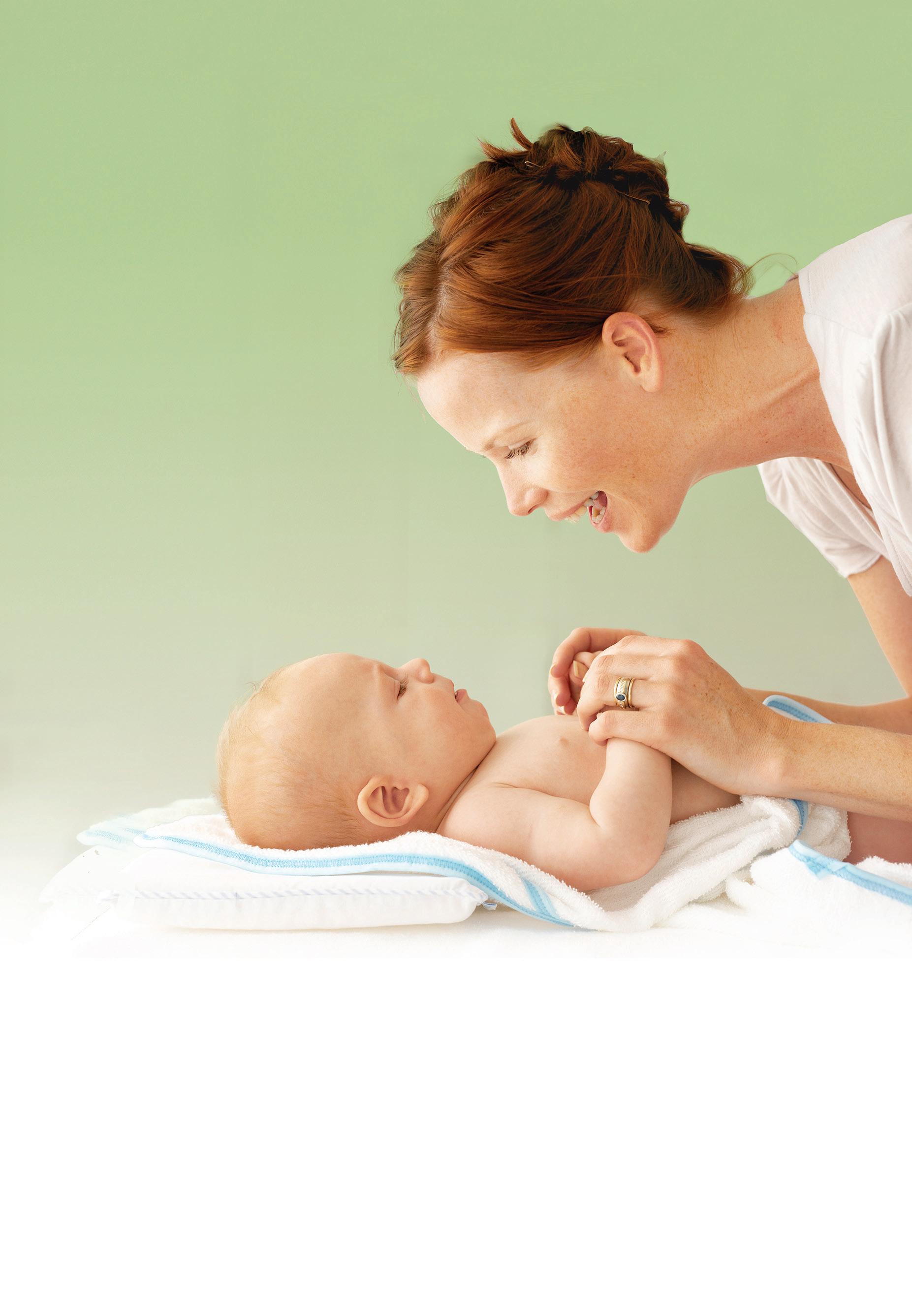
Diapering that nurtures babies may enhance their:
✿ Development
✿ Physical growth
✿ Emotional well-being
✿ Family bond
✿ Sleep
h ealth4 m o m.org
Diapering provides healthful bonding moments for you and baby. And, for baby’s development, it can mean so much more than just a clean, dry bottom. The first time you hold your baby, you know you would do anything for them. You love and want to care for them. You notice every first— first footprints, first hat and blanket, and changing their first diaper.
What if you knew that how you diaper your baby could do so much more than just keep their bottom clean and dry? Research shows a nurturing approach to diapering can influence your child’s health, sense of well-being and overall growth and development. Would you dare to look at diapering differently?
Your baby’s nurses know diapering offers chances for bonding, touch, closeness, stress reduction, and comfort. Would you consider diapering differently to gain these physical and emotional benefits for your baby?
In this booklet, AWHONN nurses invite you into the science and habits of developmental diapering to help you make the most of every change and transform your care from routine to revitalizing.
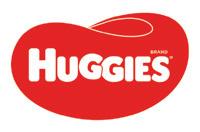
Development of this booklet was supported with funding from Huggies® Brand No Baby Unhugged program, which helps all babies get the care they need to thrive. poW e re D By the nur S e S of Visit us online:

Mindful, Engaging Care Activates Baby’s Development
With mindfulness, diapering can be more than a routine task, science shows. Mindfulness means taking your actions off autopilot and being fully present—completely engaged—in the moment.
It’s paying attention to every second with your baby. It’s seeing how baby is communicating with you: their moods, movements, expressions and, most importantly, their cues.
Initially, you’ll change up to 12 diapers a day—that’s 12 chances to hug your baby, connect, bond and form fun rituals that turn this ordinary activity into something extraordinary.
Make each change a sensory sy M phony with your soft voice, gentle touch and slow and careful movements. With a singsong voice, sweetly talk or sing to baby. Baby loves your smell and is calmed by your presence. Rest one hand on baby during diapering as a safety measure but also as a reassuring touch, especially if baby should startle or move suddenly.
sM ile at baby. Create calm and happiness as you gaze into baby’s eyes; make that emotional connection. Babies love to look at and interact with others. Research tells us they quickly recognize and enjoy seeing family members, particularly their parents.
r egularly hug, touch and love your baby. Physical affection has protective powers. Your hugs, cuddles and caresses have protective effects including enhancing baby’s overall physical growth and development. When you’re relaxed and engaged, baby feels connected and your bond grows through your touch and attention.
your gentle care during diapering reassures and cal M s baby, and creates comfort with diapering. Hold eye contact and notice what baby enjoys. Your focused attention and touch are what baby needs to flourish and thrive, so don’t forget to begin and end each diaper change with a hug!
b eing M indful during diapering instills a sense of peaceful intent. In our hurried world, take the time to be good to yourself and your baby by approaching diapering in a mindful, caring way.

Want to learn more? Visit our n ewborn skin care Zone online for videos and additional expert advice from nurses: bit.ly/newbornskin
Set the Stage For Supportive Diapering
Create diapering areas around your home knowing it’s easy to accomplish what’s convenient. Your baby benefits from every change when you set the stage for an engaging experience.
➊ Create a Calm, Clean Diapering a rea
Wash your hands before and after each change. Keep all supplies in reach: super-absorbent diapers, skin-friendly wipes, disposable bags for soiled diapers and hand sanitizer to clean your hands on the go, as needed.
➋ Change an D CheC k Ba By r egularly
Change baby’s diaper once it’s soiled. Nurses recommend checking and changing diapers every 1–3 hours, at every feeding during the day and once during the night. Diapers with wetness indicators help you avoid waking baby during a nighttime check; this also protects baby’s precious sleep.
➌ Comfort your Ba By During Stre SS
Not all babies like to be changed, and it’s not always easy to determine baby’s stress from pain. Soothe a fussy baby by moving slowly through diaper changes; keep a hand on baby at all times to minimize any discomfort.
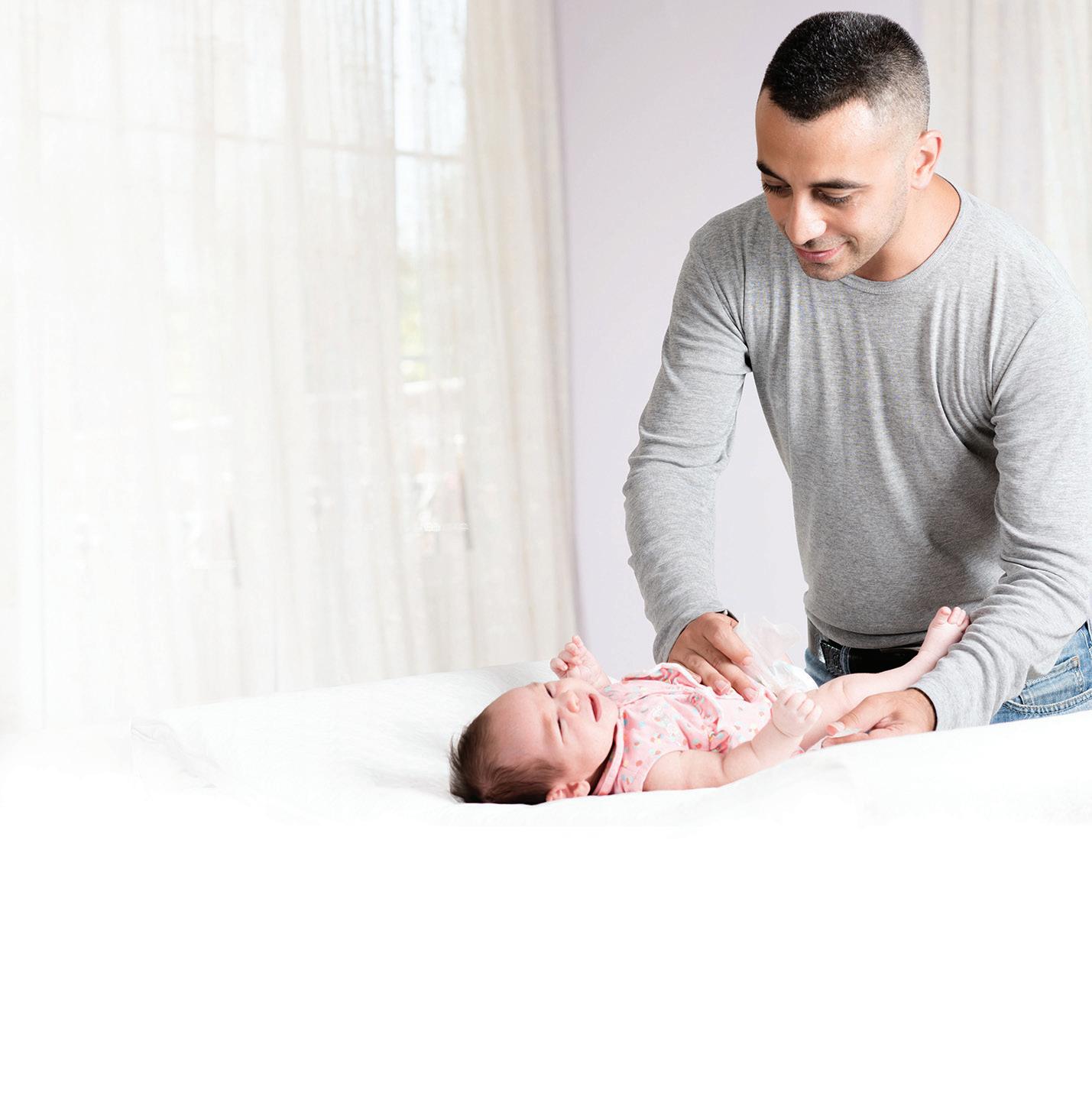
➍ Champion Ba By’ S p reC iou S Sleep
Having special routines before bedtime and using diapers with wetness indicators promotes and protects baby’s healthy sleep. This fuels baby’s growth, brain development, thinking and learning.
➎ Cheri S h Confi D en C e an D Clo S ene SS from your family ConneC tion
Begin and end each diaper change with a hug. As you meet baby’s physical and emotional needs, your closeness stimulates baby’s well-being and boosts your parenting confidence.

If your baby was born before 37 weeks, protect their senses during diapering with these choices:
✿ quiet area
✿ lighting soft and low
✿ one hand on baby at all times ✿ move baby only as needed
comfortable temperature
no heavy scents or odors
Source: Adapted from Every Change Matters™: A Guide to Developmental Diapering Care; Huggies® Nursing Advisory Council.
✿
✿
p rotect baby’s senses
Wait! Babies Get Stressed?
What stresses your baby?
What makes it all better?
As you interact, your baby is communicating their likes and dislikes. They squirm, laugh and giggle. They fuss, cry and turn away. Are they happy? Stressed? In pain?
Babies need reassurance through your presence and gentle touch, research shows. Skin-to-skin contact slows and calms baby’s breathing. Swaddling gives baby the closeness and comfort they once felt in your womb.
As you diaper your little one, look to see if baby is trying to self-soothe by sucking on their fingers, a pacifier or a toy. All babies are born with a strong suck reflex, and experts know sucking helps babies relax, manage their emotions, focus, create comfort and security— even fight boredom. Use this information to your advantage; offer your clean finger, a pacifier or toy to your little one. Diaper rash is physically uncomfortable and can be stressful and painful for even the tiniest of babies. It can escalate to infection if not caught early and treated. Look for signs of rash and use a barrier cream when you see any redness in baby’s diaper area.

Babies may break eye contact when they’re overwhelmed or overstimulated. Give them time to regroup. Hug, hold, comfort and reassure them, and then patiently prepare for them to re-engage and turn back to you.
If your baby was born early (before 37 weeks), ask your nurses which positions are best for your preemie. Certain positions are shown in research to enhance feelings of calmness and security, reduce stress, protect baby’s delicate skin, help increase muscle strength, minimize heat loss and evenly distribute pressure on different parts of baby’s body.
s tress or pain?
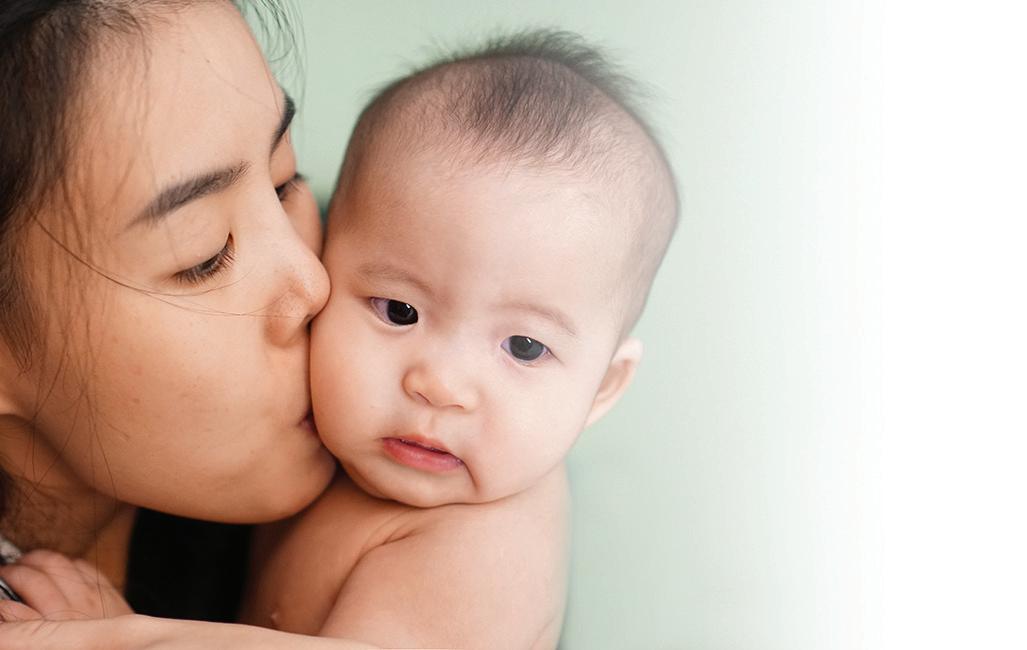
h ow you comfort your baby depends on whether baby is stressed or in pain.
s tress in babies looks like:
✿ a change in skin color, from pale to red-faced or vice versa
✿ grimacing or scowling
✿ restlessness, waving arms
✿ stiff or floppy body
✿ avoiding eye contact
pain in babies looks like:
✿ crying that starts suddenly and is louder and longer than when baby typically cries because they’re hungry
✿ faster breathing or heart rate
✿ arching back, pushing away
✿ quickly withdrawing from the painful situation or thing


Baby’s Asleep —And So Busy!
Sleep is essential to your baby’s health and growth—even their ability to think and learn. While baby’s sleeping, experts at the American Academy of Pediatrics (AAP) say these are just a few of the many amazing things their body is busy doing:
✿ growing
✿ gaining weight
✿ building immunity
✿ releasing stress

✿ boosting brain development
✿ priming learning and thinking
✿ enhancing self-control
✿ processing language
Sleep routines cue baby that it’s nap or night time. To relax, gently rock with baby. Gaze into baby’s eyes, snuggle skin-to-skin, sing soft lullabies or hum melodies, and tenderly pat baby’s back or tummy as you whisper quiet shushing sounds. As baby drifts to sleep, move slowly and place baby on their back only in their safe bed; this will help them go to sleep on their own as they grow older.
f or optimal growth and development, protect baby’s snoozing in these 2 key ways:
➊ Guard aG ainst interruptions
Think long-term when you put your baby down for a nap or nighttime:
✿ p ut baby in a clean, dry, super-absorbent diaper
✿ Wake them only if their diaper is soiled
✿ Minimize loud noises that can startle baby awake
➋ r educe sleep-related risks
The AAP recommends sharing your room—not your bed—for baby’s first year to reduce risks from sudden infant death syndrome (SIDS).
Baby’s safe sleep setup includes:
✿ a lways sleeping on their back only— never their side or tummy
✿ o nly sleeping in an infant-safe crib or bassinet— not a car seat
✿ n ever sleeping on a soft surface, especially couches
✿ n o other items in baby’s bed— fitted sheet only under baby
✿ n o drug use, drinking or smoking around baby

Make the Most of Baby’s Time Awake
If your baby was born before 37 weeks, maximize sleep time by clustering the care baby needs when they’re awake—such as bathing, diapering or feeding.
Take extra care to protect baby’s sensory experiences such as touch, light and sound as babies born too early can easily be over-stimulated, which can lead to stress or discomfort, even developmental problems.
Preemies especially struggle with going to and staying asleep. Offering baby a pacifier at bedtime is recommended by the AAP once baby is nursing well to reduce SIDS risk. If your baby’s pacifier falls out after they’ve dozed off, there’s no need to put it back in their mouth.
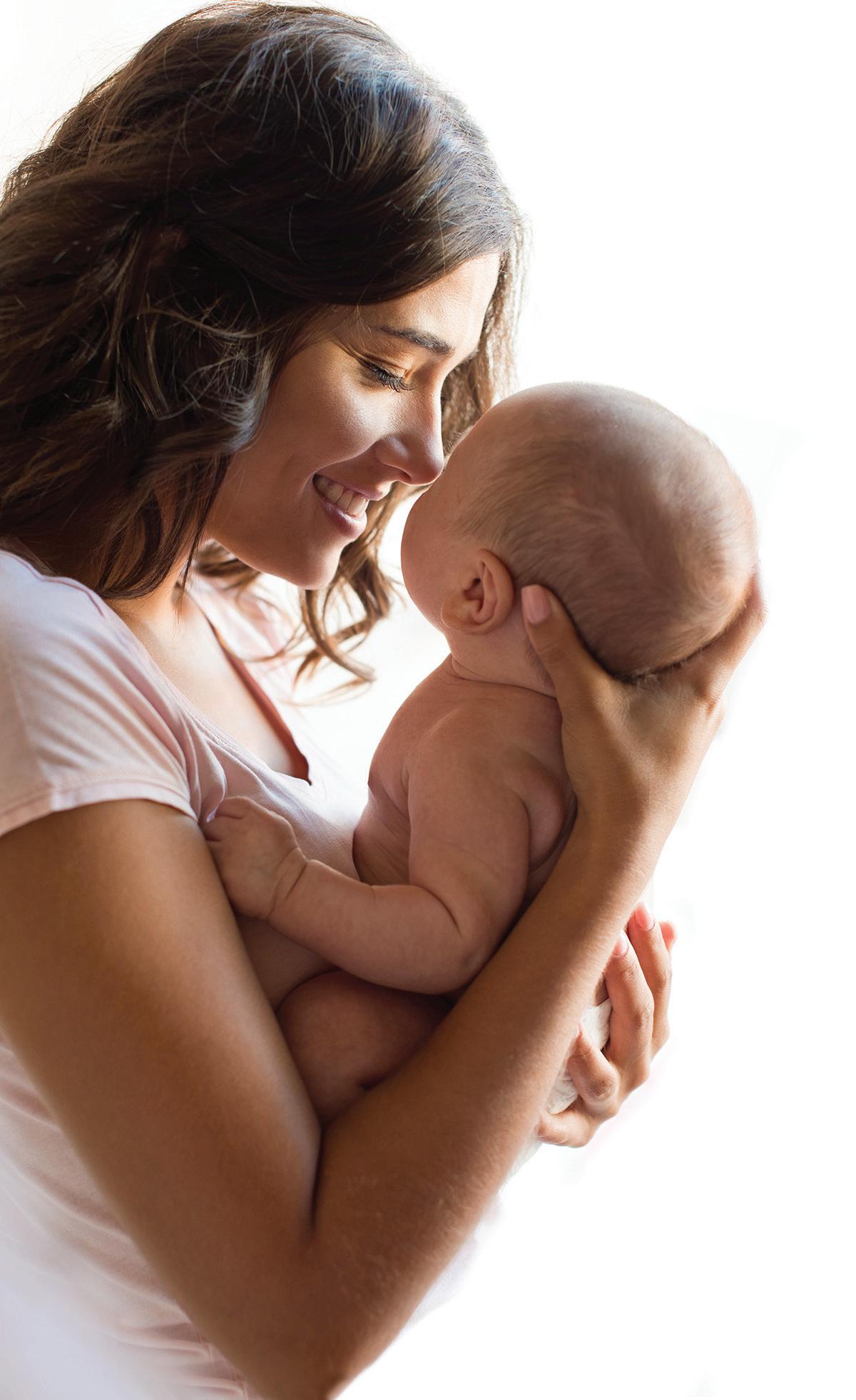
Make a Love Connection
When every diaper change begins and ends with a hug, you’re doing more than just protecting baby’s precious bottom; you’re making a love connection that stimulates baby’s growth and attachment.
As baby increasingly trusts your care, your own confidence increases as a parent—further strengthening your family bond.
We all thrive on routines, babies too. These can be daily habits like neighborhood stroller rides, quiet nursing sessions, playtime and diapering. Routines help us organize our days and make the most of our time. Research confirms routines are particularly essential for baby’s growth and development. Routines help babies relax and learn habits that help them know what to expect. Routines also minimize stress.
Diapering is a routine you can count on each day to enjoy a few minutes of loving and meaningful interaction with your baby.
What if i forget to be mindful when diapering?
Diapering with mindfulness is a bonus on top of your good care! Please be as kind and gentle to yourself as you are to your baby. If you find yourself rushing through any routine, use that as a sign to stop, regroup and return to your mindful habits. Soon, you may notice that baby is so accustomed to your loving and engaging approach that their eager anticipation will keep you focused on your interactions.
Can Anyone Practice Mindful Diapering?
Parents, grandparents, siblings, relatives, caregivers and friends can all interact mindfully with your baby. Share the science in this booklet with them. Ask them to begin and end each diaper change with a hug, and to interact mindfully with baby at every diaper change. Baby’s development and trust in their new world grows as their routines with you are repeated.
Want to learn m ore ?
Visit our Newborn Skin Care Zone online for videos and additional expert advice from nurses: bit.ly/newbornskin


Development
this booklet was supported with funding
Some content was adapted from the Huggies® Nurse Advisory Council’s EveryChangeMatters:AGuidetoDevelopmentalDiaperingCare, including skin care, physical development, sensory support and bonding.
of
from Huggies®.
poW ere D By the nur S e S of













